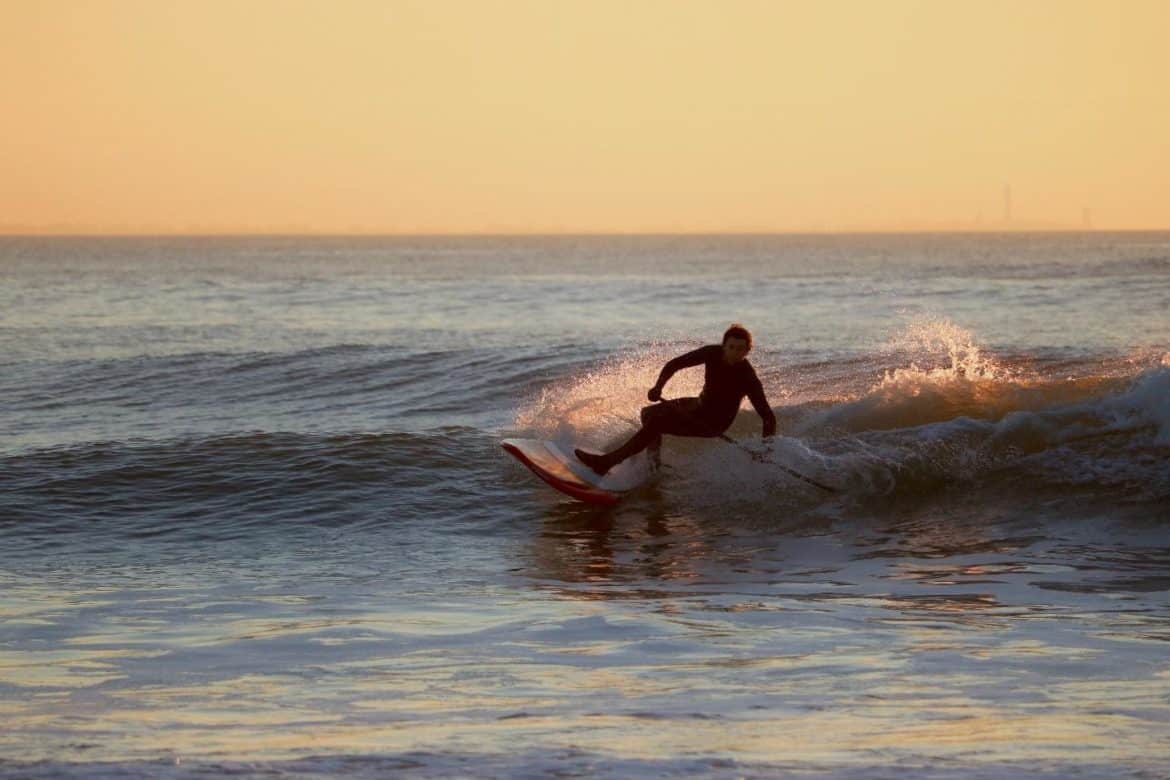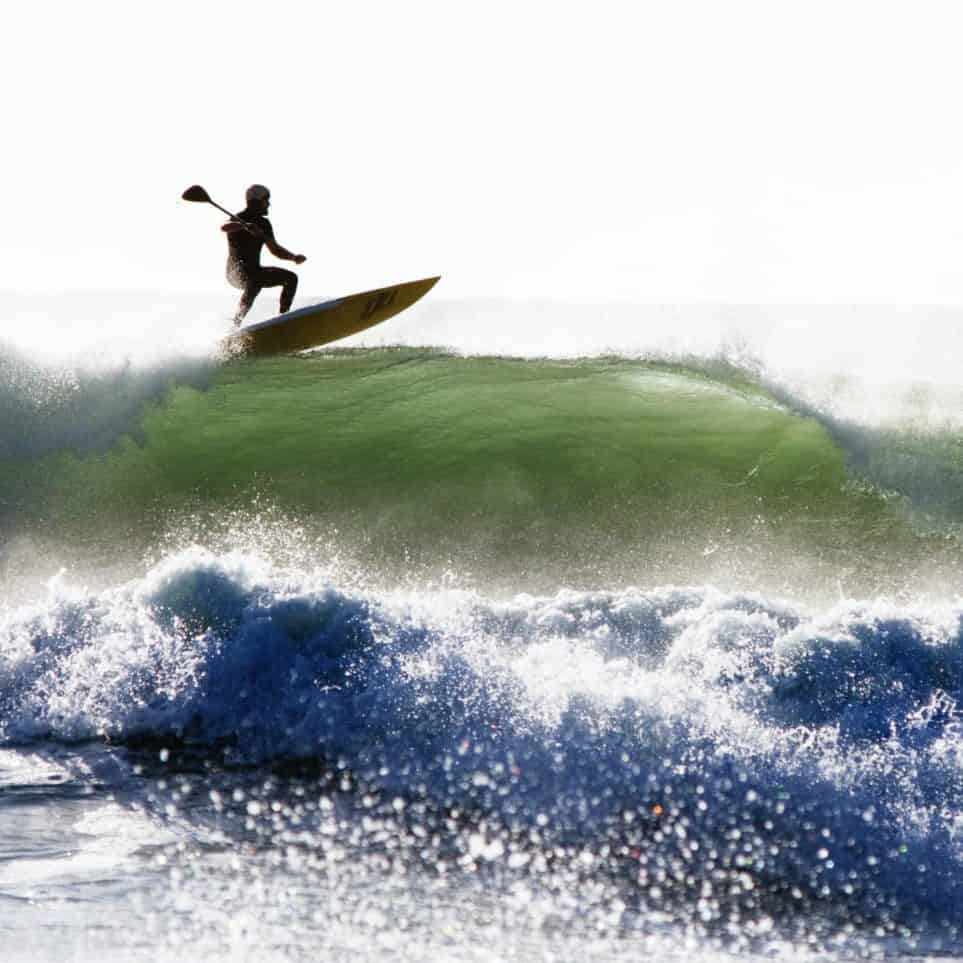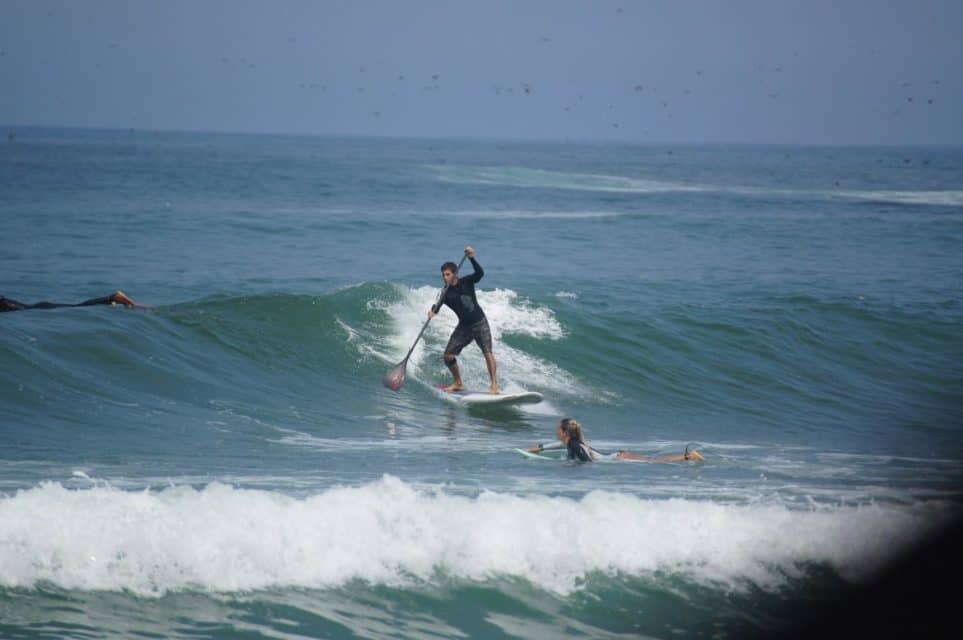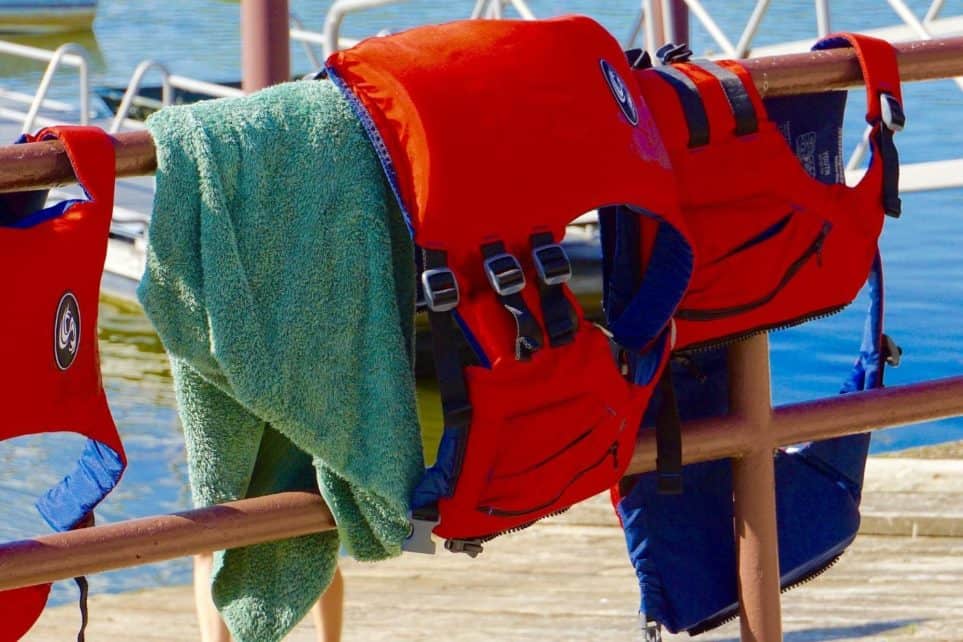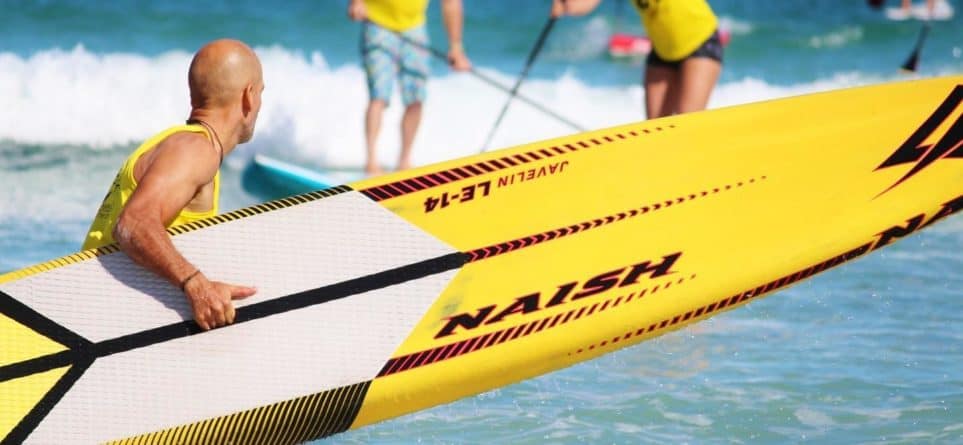The paddleboarding world is diverse, and there are many opportunities to explore. One of the most challenging and also thrilling things that you can do on your SUP is to paddle your board on the wave face. With that in mind, many factors go into maneuvering a SUP board on the wave face. After all, learning how to navigate such waters takes some time and practice. To simplify the process, we have rounded up the key factors to help you paddle your board on the waves.
Paddling a SUP on the wave face involves,
- Understanding Your SUP Board
- What else do you need
- Proper SUP Stance For Maneuvering On The Wave
- Efficient Paddle Strokes
- SUP Safety Measures
Understanding Your SUP Board
Not all SUPs are the same. Thus, if you wish to have better control over it on the waves, it’s crucial to know and understand the parts of your board and how they function.
- First of all, a board with a pointy nose will cut through waves with little effort, but it will be less stable.
- In contrast, a board with a rounded nose will be more stable but won’t be as smooth when facing waves.
- A longer and narrower board will have more speed in the water, but it will be hard to make turns with it.
- On the other hand, a shorter and broader SUP will be slower, but you will find it easier to maneuver.
- In addition, if you go with a single-fin setup, you may enjoy better tracking and speed, but it will be less stable against waves.
- However, a tri-fin or double fin setup will be more stable, but it may not be easy to paddle the board straight.
- Besides these, you may also consider the durability of the SUP before you try to paddle the waves. After all, the ocean is unpredictable, and you will appreciate a sturdy board out there.
With this in mind, you have to decide what kind of waves do you want to ride. If we are talking about SUP surfing breaking waves close to shore then you need a wave specific SUP. This SUP will be shorter, it will have a pointy nose and usually 3 fins. Having the correct SUP will make wave riding much easier (but still not easy). A hard board is also better than a soft inflatable board because it does not flex under your feet when you are on the wave. However, these days it is also possible to buy an inflatable SUP board meant for wave riding that is also pretty good. It is possible to ride the waves also with a regular SUP, but I would recommend it only if the waves are really small or really easy (breaking slowly). On the other hand, if you want to ride waves on the open sea, waves that do not break, but just help you go faster in the direction that you want to go, in this case a regular SUP is fine. To learn more about which paddleboard would suit you better, check out the Best Inflatable Paddle Boards Under $400.
Other Things That You Need
A few other items that might come in handy:
- An adjustable lightweight and sturdy SUP paddle
- A leash, if you fall of your board a leash makes sure you don’t lose your SUP.
- Efficient SUP pump if you are using an iSUP, this way you can fill the board to the max making it less flexible and better for wave riding.
- Enough drinking water to combat dehydration and some snacks or protein bars for replenishing energy. Riding waves is more exhausting than regular paddle boarding.
Once you have your SUP ready and these basic supplies, you will be ready to face the waves.
Ideal SUP Stance For Maneuvering On The Wave Face
Maneuvering your SUP on the wave face is a bit different than standard paddleboarding. So, you may need to adjust your SUP stance. With standard paddle boarding your feet should be parallel, but once your board starts gliding on the face of the wave you should be in a surfing stance. This means you should place your feet on the front and back like you would be standing on a skateboard, snowboard, surfboard. This way, you will be able to push down or pull up the board’s nose and tail to maneuver with more precision and your balance will be much much better.
Usually, you would paddle with a ninety-degree angle for better efficiency, but while riding the waves, you may have to improvise for the sake of balance. While paddling on the wave face, a more lowered core will offer you better control and reduce the chances of a wave knocking you off your board.
Efficient Paddle Strokes
There are quite a few paddle strokes you can use. The most efficient paddle strokes will help you maneuver better on the waves. You can use J-strokes for propelling your board forward. The slight curving at the end of the stroke will allow you to correct the board’s tracking.
The sweep stroke and c-stroke will also work well for turning your board. But, this requires a bit more experience in SUPing. Simple reverse strokes are the best for reducing speed and gaining more control when turning.
Aside from these, you can also use draw-stroke and reverse draw-stroke in the ocean to gain balance and move your Sup to a better position to catch waves.
While using these strokes, remember to reach as far as possible with your paddle without breaking your balance. This way, you will catch more water and gain better momentum.
SUP Safety Measures
Safety is paramount if you want to go SUPing in the waves. A few precautions may end up saving your life out in the water. Therefore, remember to wear a Coast-Guard approved PFD when you paddleboard in the ocean. It will not only help you when you fall in the water, but it will also make your SUPing legal outside of swimming, bathing areas. If you are doing SUP surfing then PFD is usually not used.
Next item is one that we already mentioned. A safety leash will go a long way to keep you connected with your board. This way, your SUP board won’t float away from you with the waves and currents. With a SUP leash, you can pull the board to you instead of swimming to it. If you are SUP surfing then a leash is a must. You do not want your board to hit someone on the way to the beach if you fall. Out of control sup boards are dangerous!
While a PFD and SUP leash is essential for paddle boarding safety, you can also bring a SUP anchor and an emergency whistle as add-ons. It will offer you peace of mind when you SUP in rough waters.
A Few Tips & Tricks To Maneuver Your Paddle Board on the Wave Face
If there’s a way to maneuver your SUP on the wave face, there are also ways to improve it. As such, some slight adjustments to your techniques and knowledge can save you a lot of hassle.
Let’s take a look,
- You can quickly determine the durability of a SUP from the construction materials and technology or by simply checking the supported PSI level.
- A board with a higher PSI limit should be sturdy and rigid.
- Usually, the more weight a board can carry, the more stable it will be in the water.
- If you want to get past the whitecaps, you can paddle while kneeling for better stability.
- When you take deep breaths, the extra oxygen will strengthen your paddle strokes.
- You can use a SUP anchor to secure your board in an emergency, and wearing bright color PFD will help others spot you quickly.
When paddling the ocean waves, keep an eye out for the weather and remember to stay alert. Otherwise, you will most likely be hitting the waters often.
Bottom Line
Whether you are an expert super or a beginner, navigating the wave face is not as easy as it may seem. It takes practice and patience to master the art of balancing on the board while paddling your way through waves or chops. But with some time and effort, we’re sure that you could become an expert. Put these strategies to use today, and you’ll soon be SUPing like a pro!

